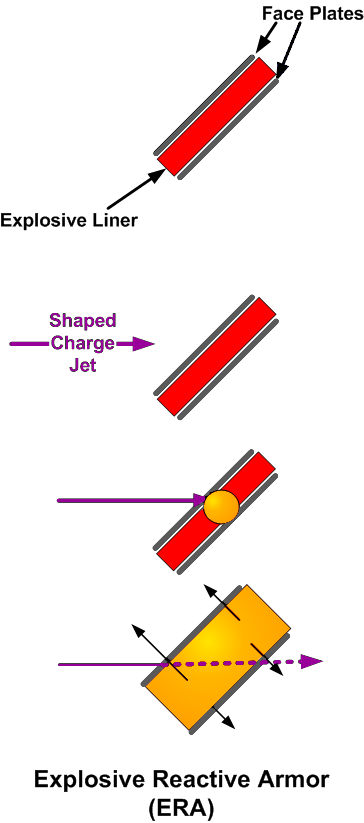Noah Corek
Cocked, Locked and a Smoking Barrel

- Intent: To create an add-on sort of armor for future Hekler'Kok armored vehicles
- Image Source: Here
- Canon Link: N/A
- Permissions: N/A
- Primary Source: N/A
- Manufacturer: Hekler'Kok Defense Industries
- Affiliation: Hekler'Kok Defense Industries
- Market Status: Closed Market
- Model: 'Citadel'-class Explosive Reactive Armor
- Modularity: Can be fitted to a wide variety of vehicles from trucks to armored personnel to main battle tanks
- Production: Minor
- Material: Titanium-Alusteel Alloy (Face Plates) and COMP-X (Explosive Liner)
- Classification: Anti-Rocket/Missile and Anti-Kinetic Penetrator
- Weight: Light
- Resistances:
- Anti-Armor Rockets/Missiles: Very High
- Kinetic: Very High
- Energy: Average
- Sonic: Low
- Ion: Low
- Lightsabers: Very Low
- Impact Shock Detonator
- 12.25 x 12.25 Individual Panels
- Magnetic Attachment System
- Applique: Due to its nature as an applique form of armor the 'Citadel' reactive armor can be mounted to just about any armored vehicle that can fit it
- Rocket, Missiles and Rods: The 'Citadel' reactive armor is optimized for use against shaped charge warheads and kinetic penetrator rounds
- Two in a Row: The panels of the 'Citadel' reactive armor are not a repeat act, only being able to protect against a single warhead or kinetic penetrator
- Tandem Charge: Due to its nature of being essentially two warheads in one tandem charge warheads are able to penetrate the reactive armor
With the work on the All Fuel Engine complete, the design team at Hekler'Kok Defense Industries began work on creating more vehicle parts and accessories to offer for sale. One piece of equipment they thought might be useful is a form of explosive reactive armor to give vehicles an extra layer of protection from things such as anti-armor rockets and missiles and anti-armor kinetic penetrator ammo, the reactive armor working to dissipate the penetrating jet, for the former, and deflecting or breaking up the penetrator, for the latter.
With the design pinned down the engineers at Hekler'Kok began the working of picking out the materials they would use in the construction of the armor. For the face plates they choose their trademark Titanium-Alusteel Alloy to keep the weight down as much as possible without sacrificing durability. For the explosive liner they choose to stay in house and picked their plastic explosive product 'Comp-X' so they wouldn't have to source it from elsewhere, not to mention that Comp-X's performance is highly comparable to other explosive material.
Next came the features they would integrate into the armor. First was obviously a form of detonator for which they chose an impact shock detonator designed to detonate the Comp-X when the front face plate is hit with enough kinetic energy aka something as heavy as a rocket, missile or shell going a certain speed. Next they chose the make each tile individual in construction so they could be easily replaceable if detonated as well as making them a standard 12cm by 12cmm by 3cm in length, height and width. Lastly the created a magnetic attachment system with a magnet being welded to the hull of a vehicle that attaches to a corresponding magnet on the back of the armor tile.
Last edited:










